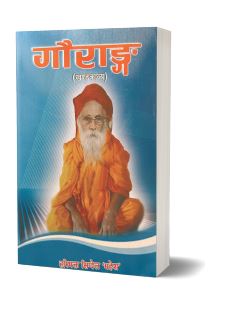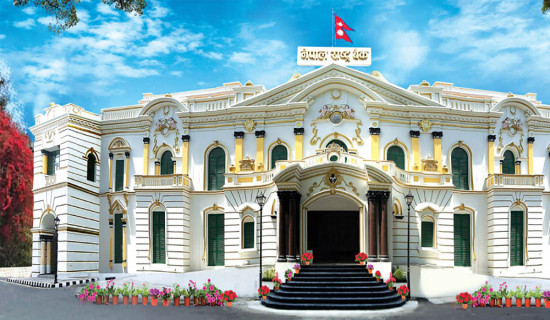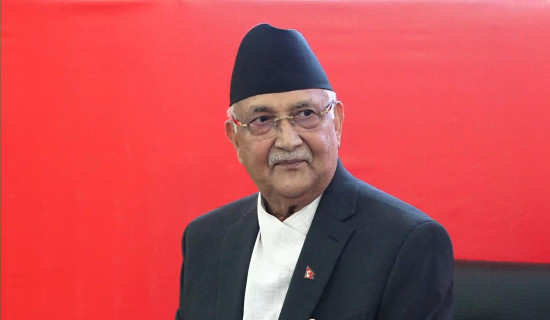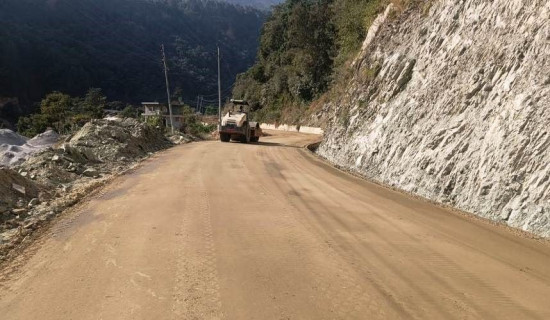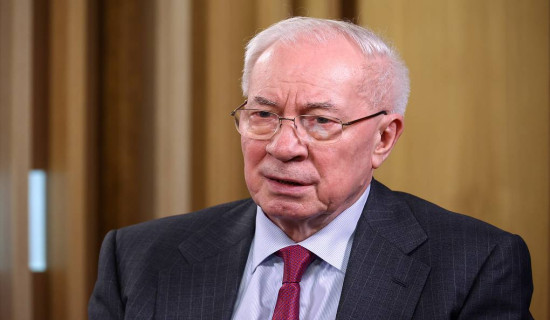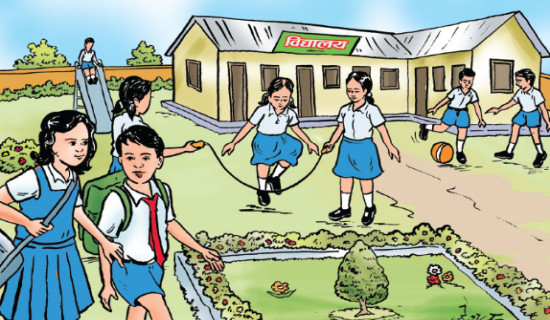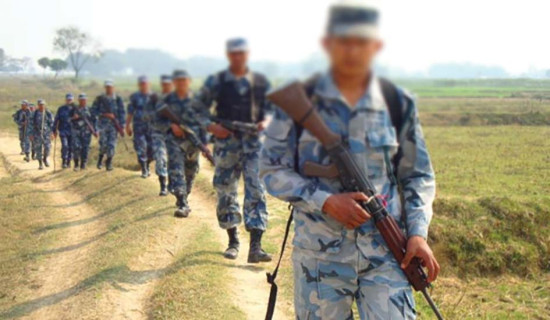- Sunday, 16 November 2025
Sentiments Of A Guru Devotee
Gandhi Raj Kafle
The intensity of thoughts sometimes spontaneously takes decorative form and gives the energy to write poems for a poet. There is also a saying to remember in this regard – every person is a poet no matter whether he composes poems or not. This instance is also true in the spiritual world of learning which means if such persons happen to be inspired by Sadhus, Santas and Gurus, they will be immensely touched and feel writing poems as a token of their devotion to such sacred Sadhus and Gurus. Perhaps examples of this kind are many, but we have one fresh here and the poet of it is Haribhakta Sigdel ‘Mahesh’.
Sigdel's sole theme of this collection of poetry is the spiritual life and achievements of Gauranga, who was popularly known by the title Guru 1008 Gauranga. Sigdel, the poet of this collection, still respectfully recalls memories with the Guru even after his demise because he says Gauranga Guru was an enlightened person. The poet elaborates that he was flawlessly a non-possessive personality and he remained unfazed by materialistic assets like money, power and physical comforts.
That is why the Guru is the sole theme of this collection for the poet. These two lines, which he composed before the starting poem of the collection, also show the poet's deep respect. The lines are:
Ghimireko Padhein Gauri Kabyako Rashama Dubi
Samjhiyein Guru Gauranga Shraddha Pushpa Diun Bhani
Poem: Mero Bhannu, page 13
(I read Rastrakavi Madhav Ghimire’s creation Gauri delightfully and remembered Guru Gauranga to pay respect to him by writing poems on him.)
When we say Nepal is the sacred land of sages and gurus, the saga is not occasional; it seems perennial. Rhishi Biswamitra, even The Ramanyana poet Balmiki, Garga, Shringi and the Sanskrit language’s first grammarian Panini of distant past were of Nepal and we have a list of names to spell with pride like Shivapuri Baba, Khaptad Baba, Swami Bisuddhadev and Gauranga Guru even in the near past. So, Nepal's this saga is intact and in this context, writing poems like the Gauranga Khandakabya concerning the Guru has to be taken heartily.
This collection, which offers prayer poems, describes the poet’s spiritual bent of mind of the poet and through it, readers become curious to turn pages chapter by chapter. However, the poems in each chapter are no longer and the conclusive chapter of the book ends with a synopsis of Guru Gauranga in the ninth Sarga.
Poet Sigdel has various opportunities to meet and talk with the Guru and he has created verses with respect for him. The Guru originally had come from the Eastern Region hill of the country where only a few people knew about his Sadhana Shakti, but later while after he arrived in Kathmandu he lived in the beautiful holy site of Gokarna.
Mentioning the Guru’s influences and fame then, the poet writes:
Bhaktaka Taantale Bato Mantrika Taantale Ajha
Darshanarthi Bhaye Taanta Bore Banera Diggaja
Poem: Page 24
Thus, the poet describes with these two lines Gauranga Guru drew the attention of all – the then kings, ministers, bureaucrats, people from security forces and ordinary people – with his Yogic power. This is not an ordinary attraction. This is blissful as Haribhakta felt and wrote poems in this collection.
However, the faith of the poet is not confined to only such feelings, he mentions for him, it is the Gurukripa that is instrumental in helping him to overcome challenges while being in the police force, achieve success in duty and excel in his responsibility there honestly. Gauranga was such Guru, who knew what was right for devotees, so his blessings were to empower the self and to build moral characters. This is what Sigdel feels and shows in the arts of language through this collection about the Guru.
Guru's Mahaprasthana (his journey to the heavenly abode) too was unique. According to the concluding chapter poem of Sigdel, Gauranga Guru was in the Ashram in Kathmandu, he had spent that night there and rose early in the morning, and he took his Mahaprasthana only after reciting and listening to the Gita and Veda verses. Sigdel describes in the poem that the dead body and eyes of the Guru were bright as if he could speak with him. This is an unforgettable experience for the poet about the Guru.
The synopsis of the knowledge the poet learnt from the devotional contact with the Guru can, thus, be mentioned in the concluding two lines of the last page of this collection. These are:
Annaya Aeka Ho Satya Satya Batai Udaunchha
Gyana Siddhi Mile Aeka Aekama Nai Bilaunchha
The meaning is: There is only one truth and it can rise only from the truth. If we achieve enlightenment, we disappear into the truth. This is what poet Sigdel tells of writing Gauranga poems in memory of his beloved Guru.

